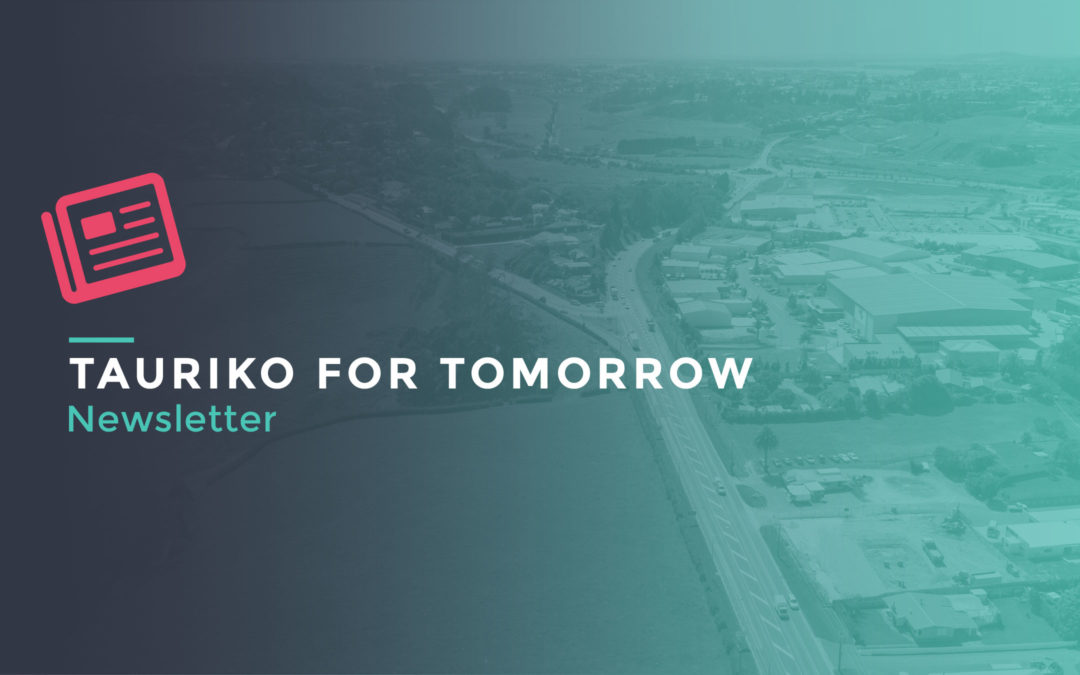Proposed Change 4 is publicly notified for submissions from Tuesday 22 May 2018. The submission period closes at 4pm on Wednesday 4 July 2018. Information on how to make a submission can be found at www.boprc.govt.nz/Change4
The proposed change seeks to amend the urban limit line to enable the delivery of urban development at Tauriko West and has been prepared in accordance with the new RMA streamlined planning process direction from the Minister for the Environment which was gazetted on 28 February 2018.
What is Proposed Change 4 all about?
Tauriko West is on the edge of Tauranga, located within the Western Corridor. Approximately half the area sits within each of the Western Bay of Plenty District Council and Tauranga City Council territorial areas. The entire area currently sits outside the Bay of Plenty Regional Policy Statement Urban Limit which means it cannot be used for urban development by either Western Bay of Plenty District Council or Tauranga City Council.
The area is identified for potential urban development to support our region’s rapid growth, as part of the SmartGrowth partnership’s 50-year vision for the western Bay of Plenty. The Tauriko West project sees SmartGrowth partners Western Bay of Plenty District Council, Bay of Plenty Regional Council and Tauranga City Council working alongside the NZ Transport Agency to create a thriving community for locals to live, learn, work and play locally.
The purpose of Proposed Change 4 (Tauriko West Urban Limit) is to amend the current Urban Limits Line and indicative timing of growth in the Regional Policy Statement to provide for urban development at Tauriko West.
The outcomes the change seeks to achieve are to:
- Enable implementation of the National Policy Statement on Urban Development Capacity (NPS-UDC) to enable a minimum of 10 years zoned development capacity within the western Bay of Plenty sub-region.
- Implement the outcomes of the review of the western Bay of Plenty sub-region Growth Management Strategy to the extent that the urban and rural growth management objectives, policies and methods are in conflict.
- Enable the delivery of urban development, specifically within the proposed urban growth area of Tauriko West.
- In February 2018 the Minister for the Environment issued a direction allowing the Bay of Plenty Regional Council to use a new streamlined planning process, provided for in the Resource Management Act 1991, for Proposed Change 4.
The Minister’s direction sets out a strict timeline in which the proposed change must occur. The timeframe provides for consultation, public notification, and a period for submissions and a public hearing. At the end of the process (approximately the end of September 2018) the Minister will issue his decision on the proposed change.
Why do we need to change the urban limit?
A change to the Bay of Plenty Regional Policy Statement Urban Limit is required to accommodate urban development in the Tauriko West area. The SmartGrowth settlement pattern review identified the area as having the potential to provide for approximately 3000 houses. Actual housing capacity numbers will be determined once the structure planning phase of the work, which is being carried out by Tauranga City Council, is complete.
In order to release land for development four inter-related projects need to be completed:
- The Regional Policy Statement must be changed to enable urbanisation of the subject area; and
- An adjustment to the local authority boundary must be made so that part of the Tauriko West area, currently within the Western Bay of Plenty District boundary, will sit within the Tauranga City Council area; and
- A structure plan and rezoning process must be delivered, identifying how the new community will be laid out. This includes the road and street pattern, cycle and walkways, the location of facilities such as potential for schooling, parks, a neighbourhood shopping centre, and public transport services; and
- The NZ Transport Agency, working alongside the three councils, needs to confirm the optimal mix and timing for public transport, walking and cycling, local road, and state highway improvements. This will ensure that the transport system for Tauriko is safe, supports local growth, and provides alternative travel choices for the community.
Go to www.boprc.govt.nz/Change4 and have your say on the proposed change to the Regional Policy Statement by 4pm on Wednesday 4 July 2018.
___
Updates from the other project partners
Here is an update on the other workstreams led by the Tauriko for Tomorrow project partners.
Structure planning
Tauranga City Council is making progress on delivering detailed technical assessments and modelling as a basis for the future structure plan: natural hazard assessments, landform development models, transportation modelling and detailed infrastructure planning for stormwater, water and wastewater. These technical components aim to create a resilient and well-connected community.
Tauranga City Council will prepare a draft structure plan for review by the community as the project progresses.
Read more about the structure planning workstream
Boundary alteration
The Western Bay of Plenty District Council will prepare an application once the urban limits change is complete. If the alteration is made, Tauriko West will be serviced by Tauranga City Council and become a new suburb of Tauranga.
Tauranga and Western Bay residents will have the chance to have their say during this process.
Read more about the boundary alteration workstream
State highway alignment and safety improvements
The Transport Agency, alongside the partners, is now considering the range of potential bus, walking and cycling, and road projects to identify the optimal mix for the transport network. The detailed business case and implementation plan is being developed, which will determine the final mix of public transport, walking and cycling, and road improvements.
In parallel to developing the plan, the Transport Agency is looking at safety and efficiency improvements on SH29 and SH29A over the next one to three years.
